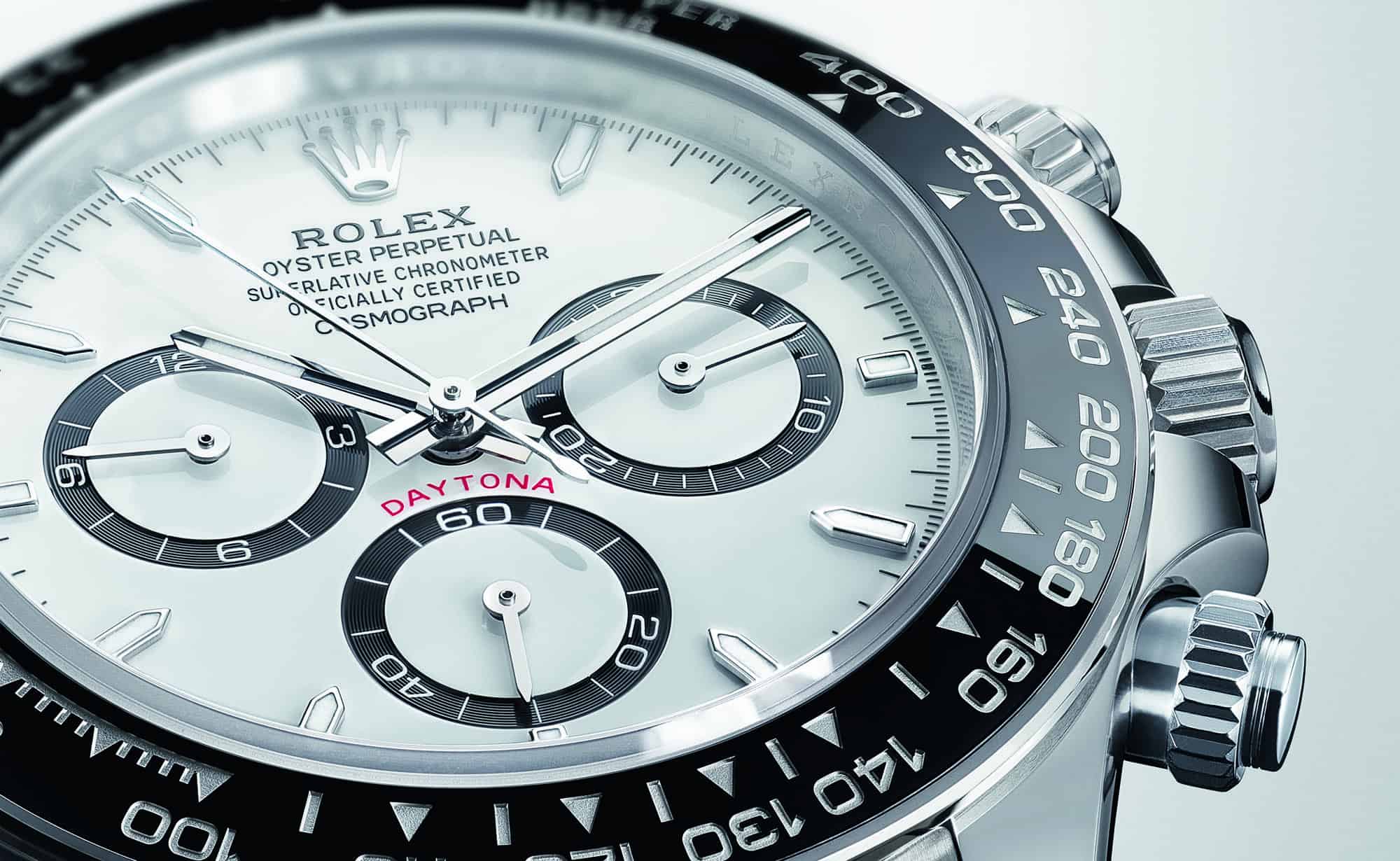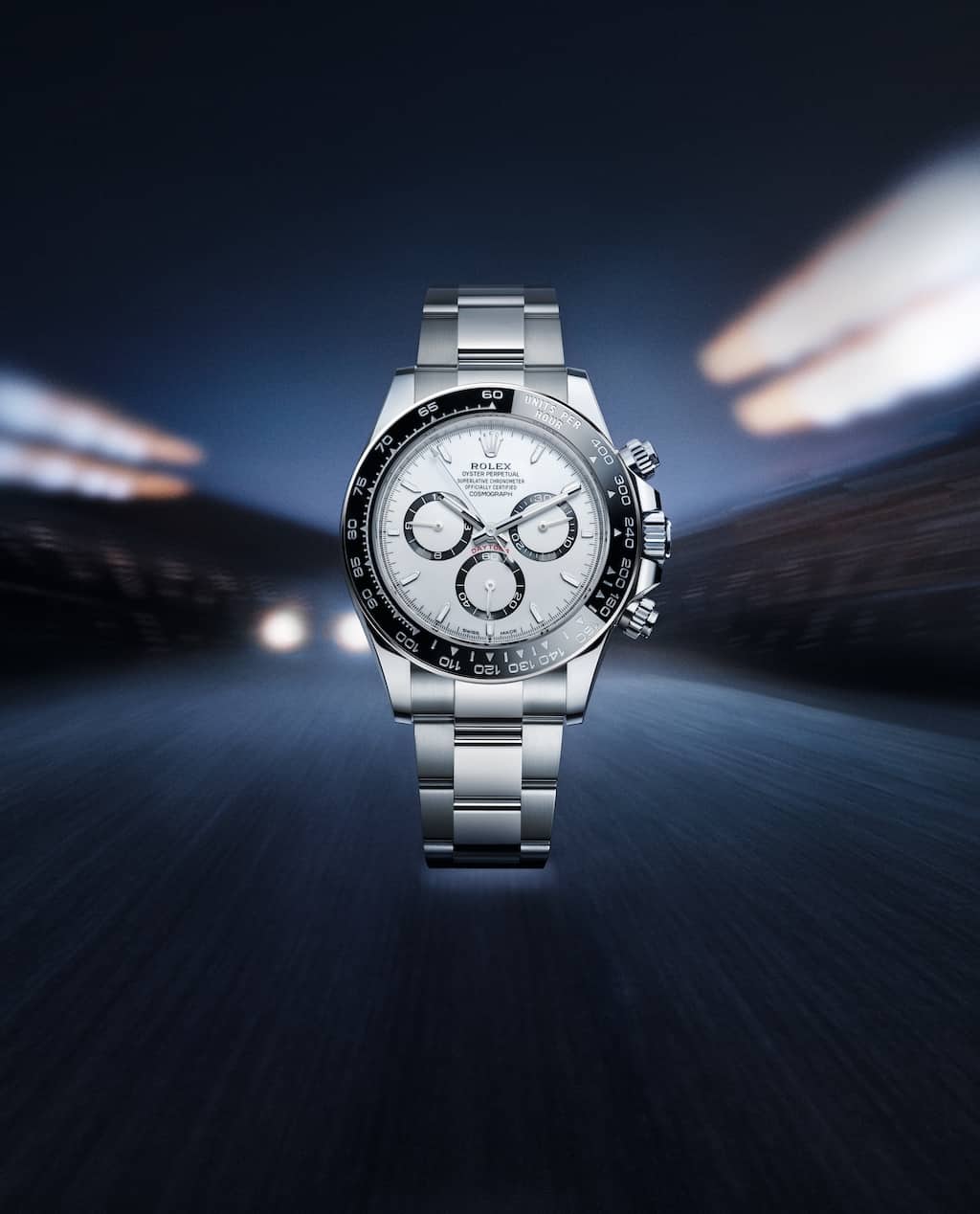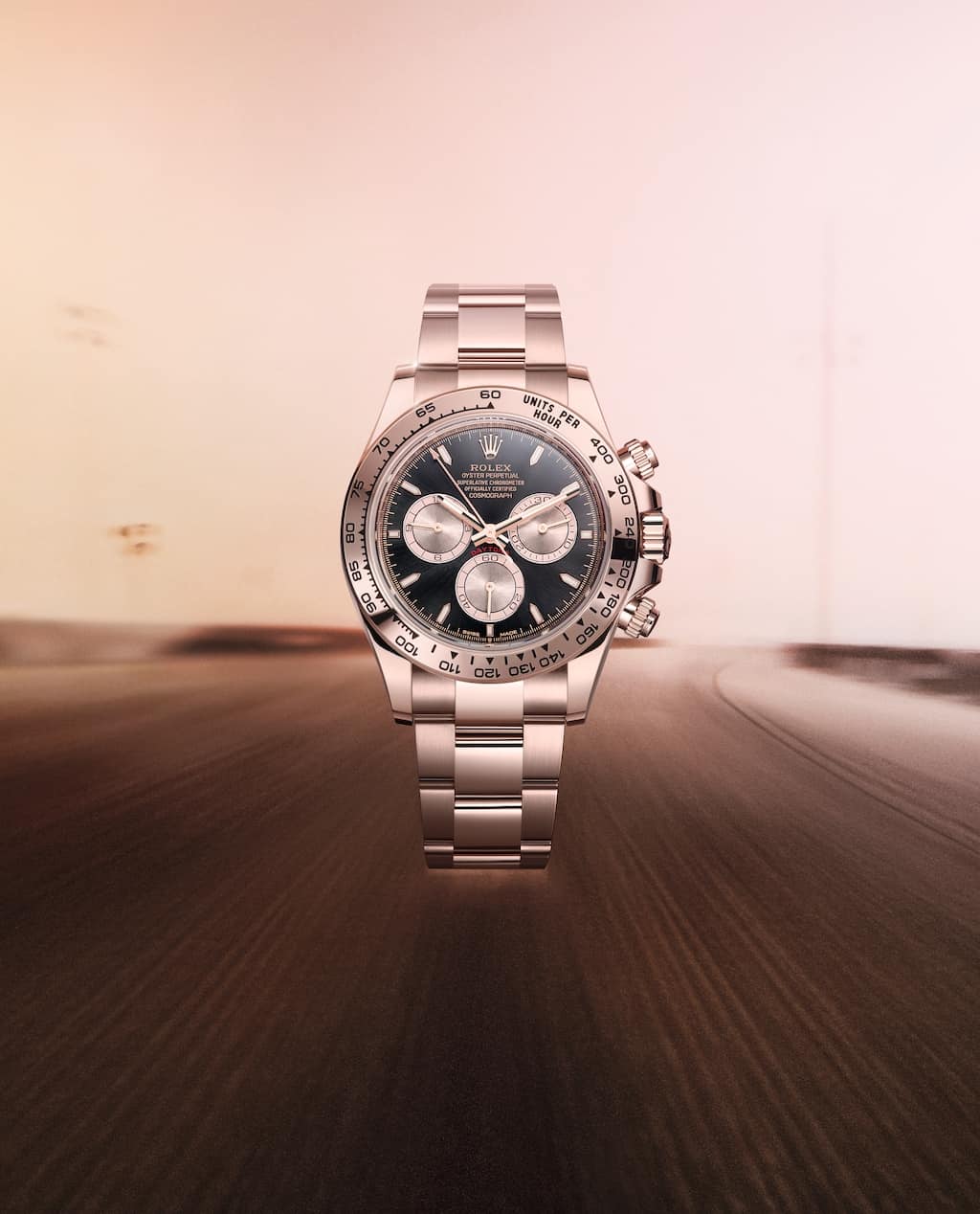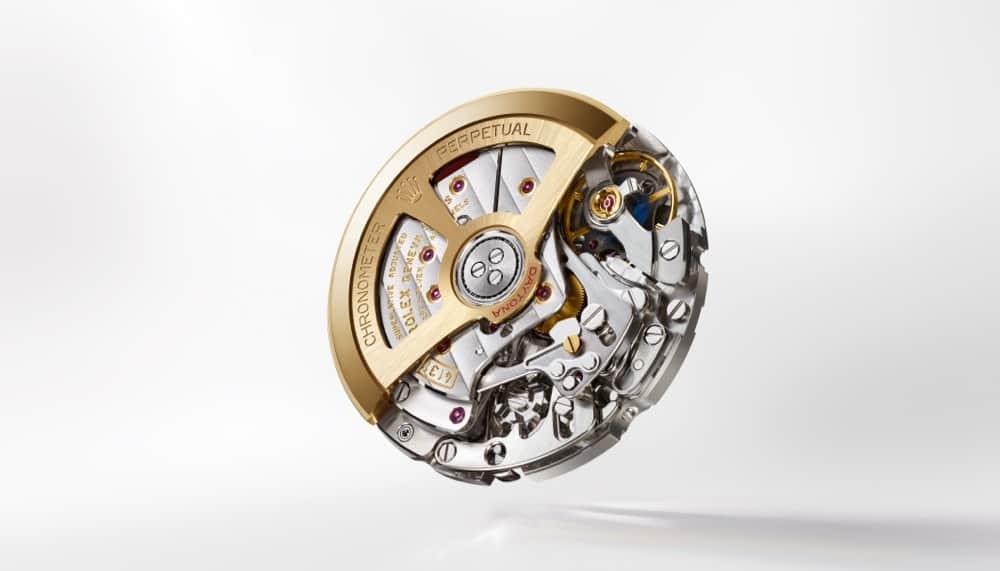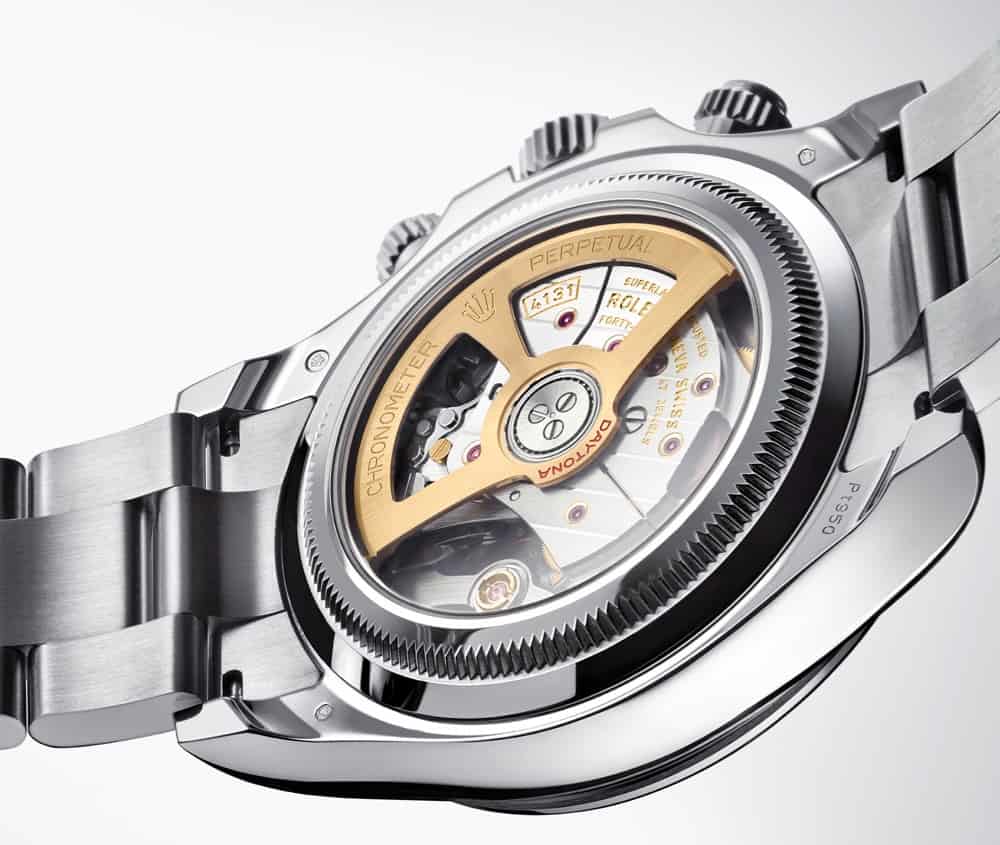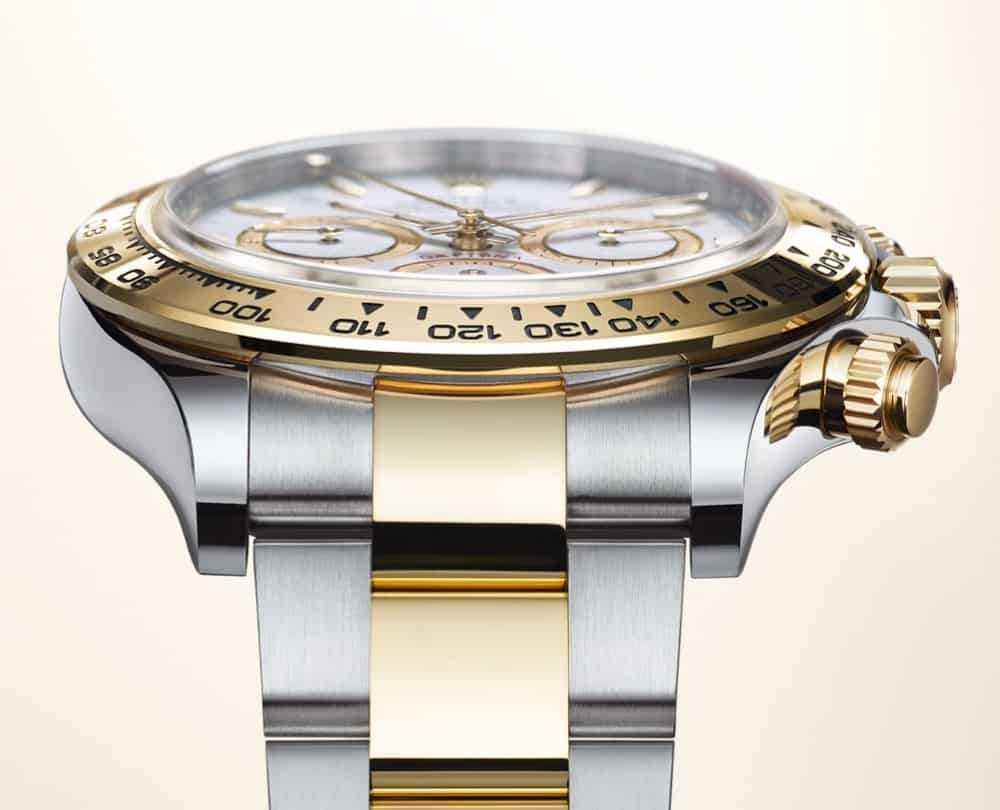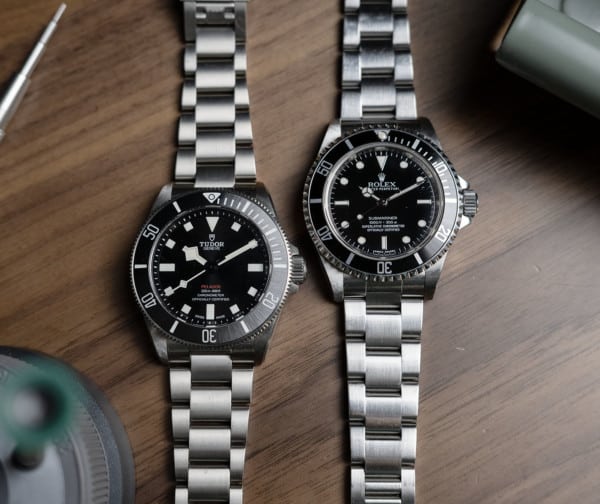Rolex has given the Daytona its first proper redesign since the 116520 was released in 2000. With it comes an updated movement, and a few nods to older references that we’ve been asking for, as well a surprise or two along the way. The new Daytona design replaces all existing references with a new base collection that spans from steel; yellow Rolesor; yellow, white, and Everose gold; and of course, platinum. Each receives an updated 4131 automatic movement which finally brings stuff like the Chronergy escapement to the collection. It also gets an openworked oscillating weight, which, for the first time ever on a Daytona, is visible through an exhibition caseback on the platinum anniversary reference.
At a glance, the new Daytona doesn’t look all that different from the outgoing references. This is very much an iteration of the same concept that’s been evolving since 1953. The most immediately apparent departure from the prior generation is the thickness of the rings surrounding the sub dials, the shape of the hour markers, and the bezel construction. They add up to a notably different vibe that presents a slightly jarring take on the dial design thanks to the altered proportions. The thinner sub dial surrounds in particular highlight this difference, and it’s a detail most noticeable on the steel examples as they are contrasted against the dial color alone. The precious metal references get those sub dials filled in, which work well here.









 Featured Videos
Featured Videos




